Laptop Mag Verdict
The iBlazr is an LED flash accessory for your smartphone or DSLR, and it's tailor-made for selfies.
Pros
- +
Great for selfies and portraits
- +
Better light than iPhone 5s' flash
Cons
- -
Awkward placement for iPhone 5/5s
- -
Blinding light even at lowest level
Why you can trust Laptop Mag
It's the age of the selfie, and from remote controls to monopods for your smartphone, there are plenty of accessories to make your self-portraits look better than ever. The $50 iBlazr flash accessory seeks to replace your smartphone or camera's flash and can be turned around to light up your face when you're using a front-facing camera. An included shoe also lets you mount the iBlazr on better cameras for improved light, but the flash works well in a limited range of situations.
Design
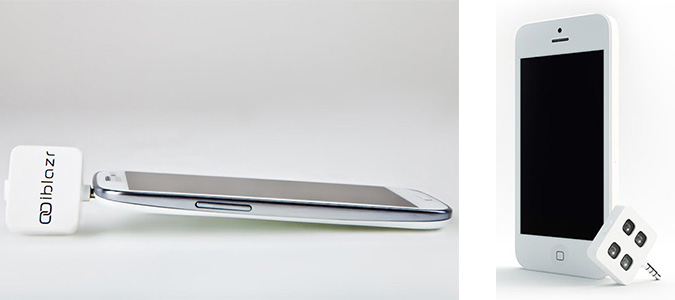
The iBlazr is a small, rectangular box about two thumbs wide. At the bottom is a 3.5mm jack that you can use to attach the flash to any device with a headphone jack. When inserted into an iPhone 5s, the iBlazr sits snugly on the phone without any gaps, but is unfortunately placed at the bottom of the phone (more on that later).
On the front of the accessory are four small LED light bulbs that can be turned on or off using the power button at the top. Pressing this button repeatedly toggles through the different light-intensity levels and eventually turns the flash off.
MORE: iPhone 6 Features: What We Want From Apple
An included carrying case comfortably holds the flash, the rubbery silicone diffuser and the cold shoe accessory, but you'll have to leave the USB charging cable behind.
At 1.25 x 1 x 0.93 inches and 0.35 ounces, the iBlazr is a dainty addition to your bag and can fit most compartments.
Sign up to receive The Snapshot, a free special dispatch from Laptop Mag, in your inbox.
Setup
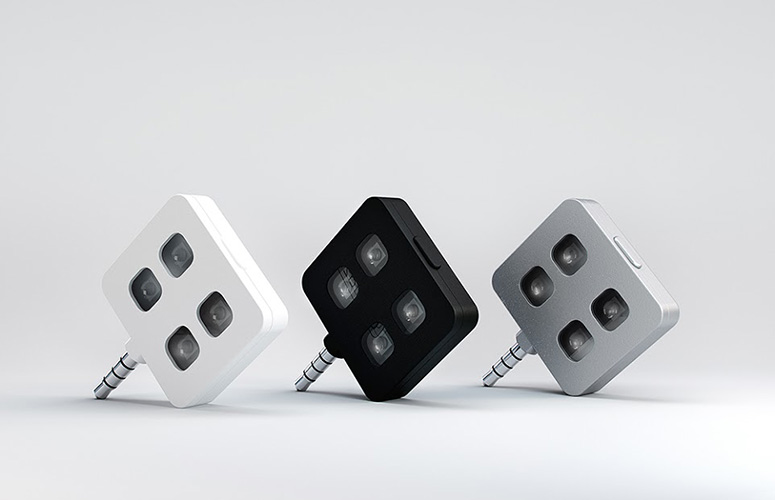
Click to EnlargeThere isn't much to fiddle with if you're pairing the iBlazr with your smartphone. Just pop the diffuser on when you first get the package (make sure to push the 3.5mm head through the hole at the bottom) and stick the flash in your device's headphone jack. You can also hold the flash in your hand for more control over where the light hits.
The flash easily snaps into the cold shoe accessory, which you can slide onto your DSLR or compatible camera.
You turn the iBlazr on by pressing the button on top. On first press, the lights will flash in succession, then go off. You'll have to press the button a second time to turn on the device at the lowest light level, and you can toggle through the different modes by clicking the button repeatedly.
To use the iBlazr with its camera app, insert the flash into your device's audio jack, then press the accessory's power button. With the app, you can set the iBlazr to go off with the shutter button. Otherwise, you'll have to leave it on throughout your shoot and turn it off manually.
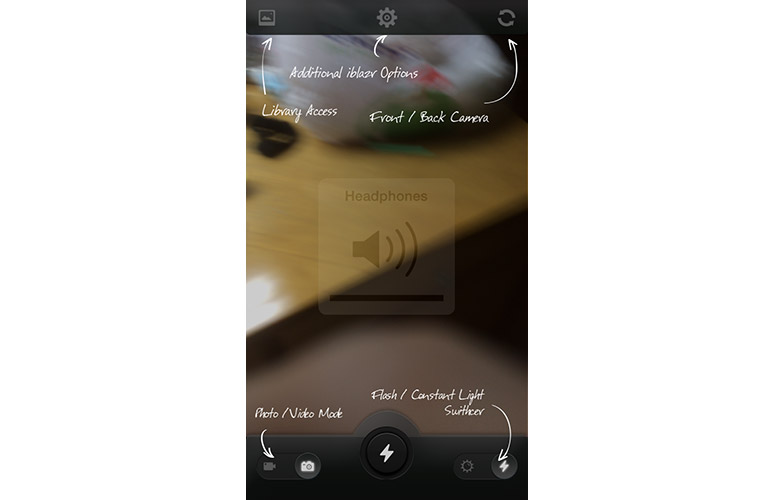
Click to EnlargeOn an iPhone 5s (the phone we used for testing), the headphone jack is found at the bottom. We had to turn our phone upside down after opening the native camera app to make sure the flash was on top and we weren't being lit from below. This doesn't affect the function of the camera, but is a pesky extra step that could make you miss fleeting moments.
You'll find the iBlazr less cumbersome on other phones, such as the Galaxy S5, which have the headphone jack up top. However, you'll still have to tilt the phone a little so that the flash shines on your face.
In landscape mode, we often found it necessary to adjust our hands and arms so that we weren't blocking the flash while taking a selfie.
When shooting with the rear camera, we often found it much easier to just remove the iBlazr from the port and hold it with another hand to light our picture. But that meant we couldn't synchronize the iBlazr with the camera.
MORE: Which Smartphones Have the Best Cameras?
App
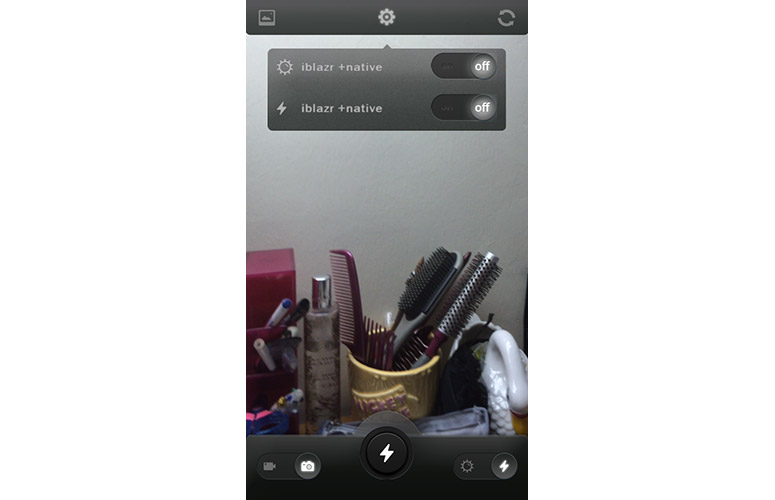
Click to EnlargeTo trigger the iBlazr only when you hit the shutter button, you'll have to use iBlazr's app (for iOS 7 or Android 4.0 and up), which lets you snap pictures and movies with the front and rear cameras. You can also choose to have the flash go off when you take the shot, or keep the flash on persistently. If you need more light, the app lets you trigger both the phone's built-in flash and the iBlazr at the same time.
Other than these basic functions, the iBlazr app doesn't offer other features, such as filters, HDR or Panorama modes.
You can also use the iBlazr with native or third-party camera apps, but you'll have to manually turn on the flash and leave it on while you take the shot.
Performance
The biggest problem we had with the iBlazr was how blinding it was, even with the diffuser on and at the lowest of the three available light settings. Depending on the tolerance of your subject, this can result in pained expressions in many of your shots.
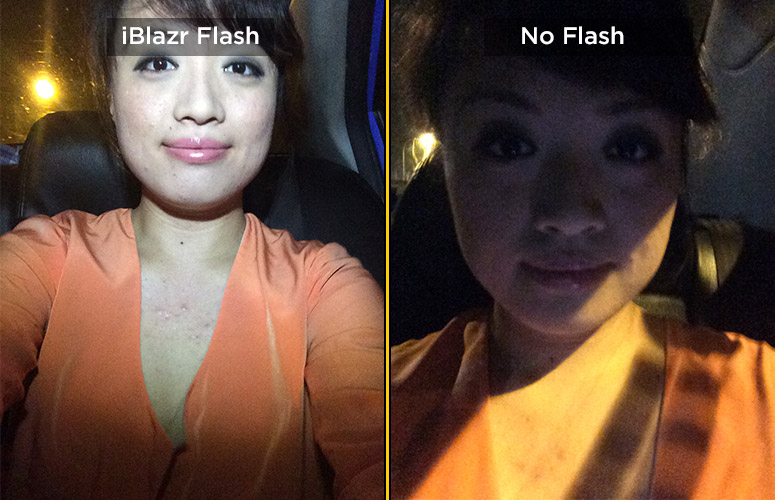
That issue aside, we loved the color accuracy the iBlazr provided in nighttime portraits. When we shot selfies on our iPhone 5s, they showed natural skin tones even with different neon lights casting a glow on our faces.
Compared to the iPhone 5s' dual-tone LED flash, the iBlazr's four LED bulbs offered more-realistic hues, and the diffuser effectively softened the harshness of the light so that we could see more details.

In a close-up shot of a plate of cheesy fries in a dark bar, the iPhone 5s' flash was overpowering, lighting up just the subject but blacking out the back corners of the photo. The same picture taken with the iBlazr was more evenly lit, and we could see more in the background.
MORE: 10 Tips and Tricks Every iPhone Owner Should Know

The difference in quality was even more evident when we shot a separate plate of dessert on a wood-grain table. The shot using the iBlazr showed the lines of the table clearly, but they disappeared into the darkness in the picture taken with the iPhone 5s' flash.
Unfortunately, we did not have the freedom to frame the picture as we would have liked without taking the flash out of the headphone jack.
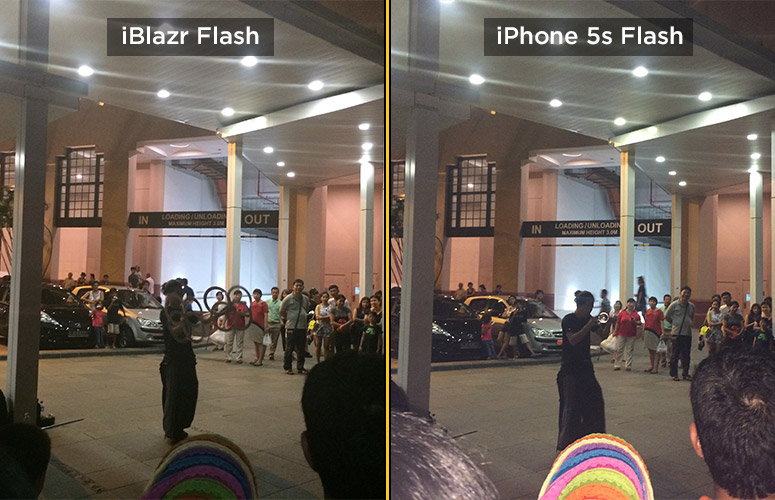
Since the iBlazr has a range of just 1 meter (3.28 feet), you won't want to use this device for wider shots such as scenic or landscape pictures. When we tried taking photos of nighttime street buskers in Singapore, the iBlazr barely lit up the performers, even at the strongest light level.
Battery Life
IBlazr says the device's 130-mAh battery will last up to 500 flashes per charge or 3 hours constantly lit at the lowest light level (up to 50 minutes on second power mode and 25 minutes on the highest setting).
To charge the accessory, you'll have to use the included USB cable. Plugging the iBlazr into your smartphone will not charge the accessory.
MORE: 5 Ways to Free Up Storage on Your iPhone
Price and Configurations
Our $49.99 version of the iBlazr includes a cold shoe accessory, USB charger, silicone diffuser and carrying pouch, and is available in black or white. The company will also offer a premium, $69.99 version in June with an aluminum body.
Bottom Line
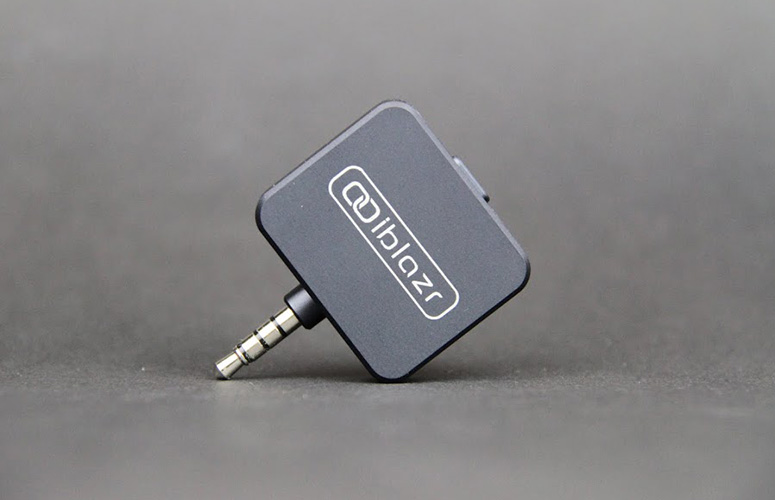
Click to EnlargeFor $50, the iBlazr will make your portraits look better, but this accessory isn't for the average smartphone owner. This device is best for hardcore selfie shooters and food bloggers, who will appreciate that the iBlazr improves their low-light pictures.
- Top 10 Smartphones
- Smartphone Buying Guide: What You Need to Know Before You Buy
- Best and Worst Smartphone Brands
IBlazr LED Flash Specs
| Accessories Type | Apple Accessories, Cameras Accessories |
| Battery Type/Life | 130-mAh rechargeable Li-ion |
| Company Website | http://iblazr.com/ |
| Size | 1.25 x 1 x 0.93 inches |
| Weight | 0.35 ounces (10 grams) |

